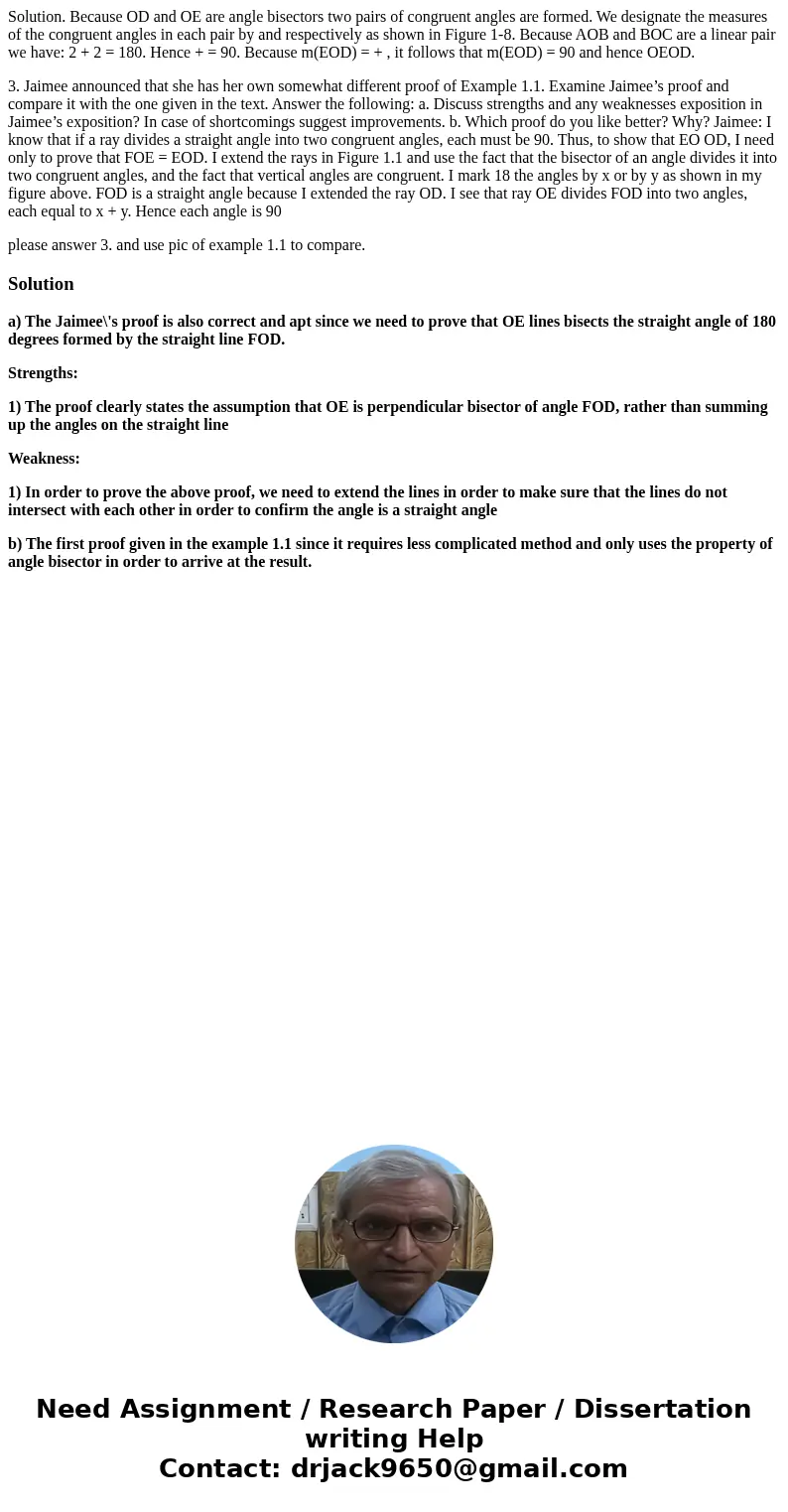Solution Because OD and OE are angle bisectors two pairs of
Solution. Because OD and OE are angle bisectors two pairs of congruent angles are formed. We designate the measures of the congruent angles in each pair by and respectively as shown in Figure 1-8. Because AOB and BOC are a linear pair we have: 2 + 2 = 180. Hence + = 90. Because m(EOD) = + , it follows that m(EOD) = 90 and hence OEOD.
3. Jaimee announced that she has her own somewhat different proof of Example 1.1. Examine Jaimee’s proof and compare it with the one given in the text. Answer the following: a. Discuss strengths and any weaknesses exposition in Jaimee’s exposition? In case of shortcomings suggest improvements. b. Which proof do you like better? Why? Jaimee: I know that if a ray divides a straight angle into two congruent angles, each must be 90. Thus, to show that EO OD, I need only to prove that FOE = EOD. I extend the rays in Figure 1.1 and use the fact that the bisector of an angle divides it into two congruent angles, and the fact that vertical angles are congruent. I mark 18 the angles by x or by y as shown in my figure above. FOD is a straight angle because I extended the ray OD. I see that ray OE divides FOD into two angles, each equal to x + y. Hence each angle is 90
please answer 3. and use pic of example 1.1 to compare.
Solution
a) The Jaimee\'s proof is also correct and apt since we need to prove that OE lines bisects the straight angle of 180 degrees formed by the straight line FOD.
Strengths:
1) The proof clearly states the assumption that OE is perpendicular bisector of angle FOD, rather than summing up the angles on the straight line
Weakness:
1) In order to prove the above proof, we need to extend the lines in order to make sure that the lines do not intersect with each other in order to confirm the angle is a straight angle
b) The first proof given in the example 1.1 since it requires less complicated method and only uses the property of angle bisector in order to arrive at the result.

 Homework Sourse
Homework Sourse